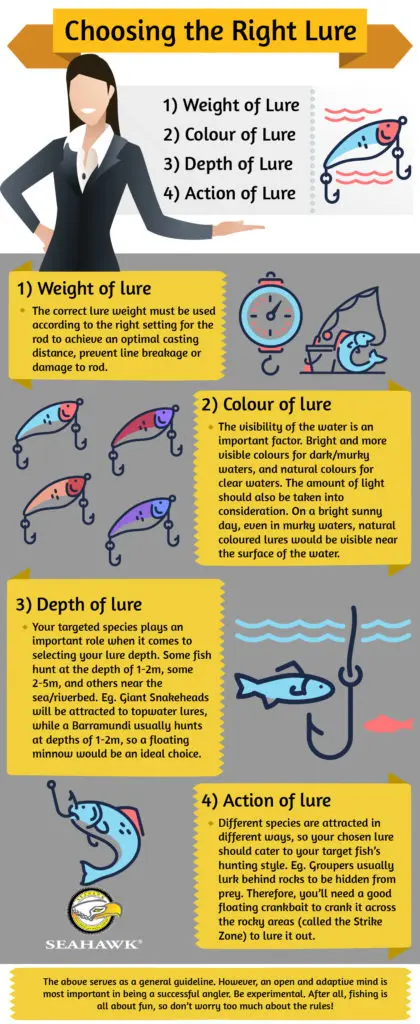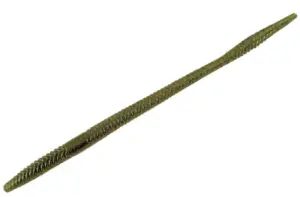One of the upsides to investing in a fishing lure is that you can move around the water and cover a wide area effortlessly.
What’s more
There is a wide range of fishing lures that you can choose, depending on the level of water you’re targeting.
These fishing products are categorized into two classes: hard and soft lures.
Hard fishing lures are typically plugs designed with multiple metal hooks, while soft hooks are made of softer material, such as latex, usually used with a jig head (which we will discuss later).
This article provides insights into the different types of fishing lures, the best color to choose, and some tips for selecting the best lure for your angling needs.
You can also look at this article for information on how to choose the correct fishing reel to maximize your effort in fishing.

here are four types of fishing lures available in consumer markets. They include:
These types of lures are used on the surface of the water. They mimic an injured baitfish, although they may also imitate smack birds and frogs. They have a gurgling effect and make noise to attract your target fish. Fish predators battling the surface lures offer the most exhilarating fishing experience as the fish chases, fights, and hits the lures.
Subsurface lures hover around the surface of the water column and imitate injured or swimming animals. These types of lures can perform a wide range of actions, such as jerking, splashing, suspending, and sliding.
Suspension lures mimic baitfish and suspend midway through the water column – they never float on the water surface or sink to the base when you stop retrieving it. They can move in fast and slow motion to entice any lurking predators.
As the name suggests, these lures work excellently in deep waters. However, you need to understand how to use them effectively for a crown catch. The quicker you retrieve it, the deeper it sinks. Some types of sinking lures come with interchangeable bibs that enable you to adjust the diving depth.
Fishing lures come in different designs and features that determine the depth it goes into the water and the lure actions it performs. Here are some alternative options to choose from.

One thing you need to understand when choosing bait color is that the color you see is not the same color a bass or tune will see in its habitat.
The color changes as it descends to greater depths because of insufficient light penetration and low water clarity.
By the way…
Even eye-catching colors can lose their attractiveness when fished in the bass world.
It would be best to choose light or dark shades of lures instead of the intricate options.
Like humans
, fish are attracted to larger portions.
Small fish do not always behave as you might expect and will curiously investigate any large food, even if they can’t manage to eat it.
That’s right
This behavior varies from one species to the other, depending on their feeding habits and preferences.
It would help to do your homework and understand what your target catch eats and what size it prefers.
Your success in choosing the right fishing lure requires research and careful consideration of the type of water and fish species you’re targeting.
Fishing is not easy, and that’s what makes it exciting.
As anglers master the science of choosing fishing lures, you also gain in-depth insights into the different fish species and how they behave in their natural habitats.
We have an article about the best place to fish in malaysia. Gathered from interviewing 12 top anglers in Malaysia. Check it out!